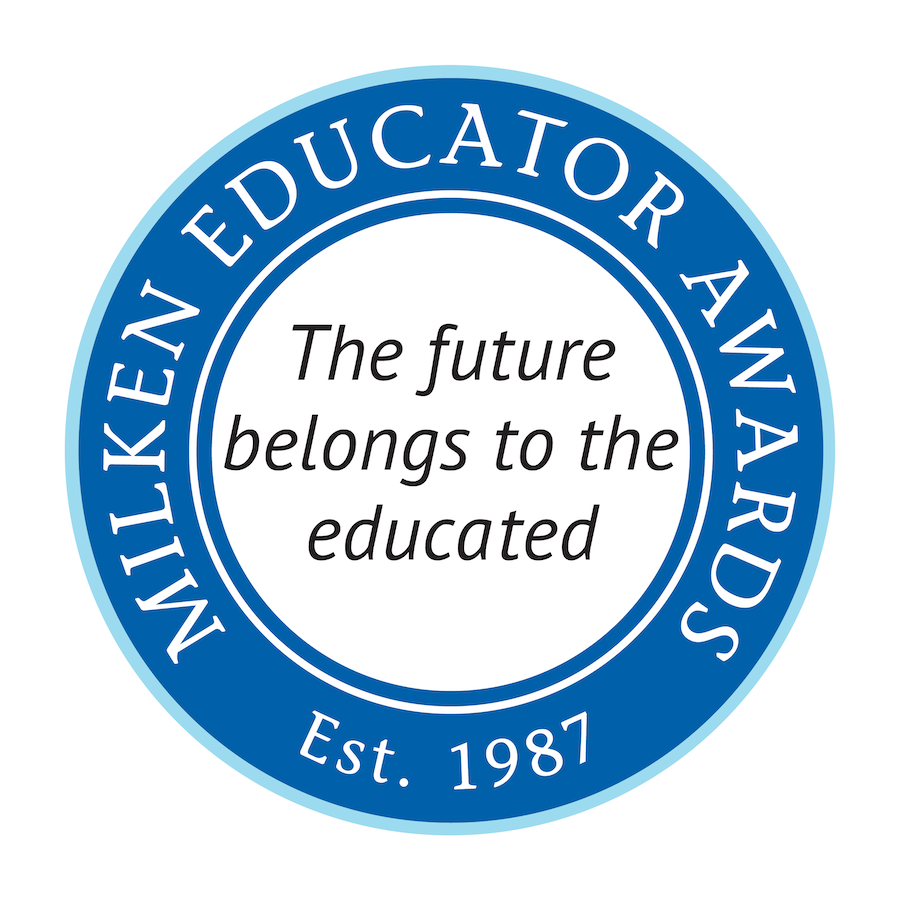Two Brothers: A Thousand Videos

Principals, coaches and mentors often say their most important job is to be instructional leaders. Yet it's very difficult to find classes, in-service and other resources that teach people how to be instructional leaders. Brothers Woody Ziegler (NE ’96) and Rob Ziegler (NE ’98), both Nebraska Milken Educators, identified a solution to the problem one day when they were talking about the use of video to provide performance feedback to classroom teachers.
Woody had been working as technology consultant for the Nebraska Department of Education, facilitating the Bill and Melinda Gates Foundation grant for professional development of school administrators. "I believed in the effectiveness of video use," Woody remembered, "but administrators didn't feel they had the time, resources or skill to produce them." The Ziegler brothers developed the idea of creating teacher demonstration videos accessed through the Internet that could be used by any teacher anywhere.

Rob Ziegler speaks with fellow educator Nancy Childs.
"When the Milken Family Foundation recognized us, it created a significant impact in our lives. It inspired us to keep stretching ourselves and doing what we believed was right, rather than do the easy, convenient thing."
— Rob Ziegler

Woody Ziegler discusses Educator's Virtual Mentor.
With their wives' blessing, Woody and Rob quit their jobs to pursue their dream. Using money they had received from their Milken Awards, along with money they raised by mortgaging their homes, they set out to provide authentic, quality teaching through video. Their goal was to help administrators and teachers open the door to discussions among educators that would help reinforce and teach positive instruction.
Since 2005, Woody and Rob have archived more than 1,200 video clips featuring real teachers recognized for their outstanding teaching methods in more than 75 different classrooms in eight states. The footage shows teaching in real classrooms, in real time, with real students learning real content. For each clip, a camera records both the teacher and the students. Teachers are asked to teach their regular curriculum in their usual way, so the learning is not staged.
The Educator's Virtual Mentor (EVM) videos are easily accessible 24/7/365 from the comfort of one's own home, office or classroom at the website www.educatorsvirtualmentor.com. The clips are organized into a "video matrix" of 51 teaching strategies — including strategies discussed by Robert Marzano and methods of learning identified by John Bransford. The strategies are organized within seven strands: Planning, Instruction Strategies, Beginning the Learning, Classroom Climate, Classroom Management, Engaging Students and Closing the Learning.
The video clips, along with research articles summarizing best practices, rubrics and reflection tools, can be used by administrators and mentors to evaluate and instruct teachers privately or in collaboration, or by teachers to conduct self-evaluation and learning. In addition to the teacher clips, a "Tools for Leadership" section of the website provides more than 100 clips that facilitate the instructional coach's ability to identify instructional strategies in action, providing feedback to educators and calibrating appraisal/evaluation practices within a school building or district.
Today, more than 17,000 user accounts exist on EVM, serving school districts, schools of education and individual educators across the nation. Schools of education use the flexible tool to teach instructional strategies prior to field experience. Some professors use the clips for semester finals, asking teacher candidates to observe the teacher in the clip and identify the instructional strategies they see in practice. EVM is a resource that can then travel with the new teacher to the classroom, providing him or her with ideas and models of teaching alternatives.
Districts and schools using EVM have expanded the system's use far beyond the ideas originally envisioned by its creators. Schools are using it as support for professional communities; mentors use the tool to work with their colleagues. Principals are allowing veteran teachers to develop their own improvement plans using EVM instructional strategies. Still others are finding ways to incorporate and design classes for district credit with in-service activities.
"It is humbling to think that our work is impacting the quality of teaching, and therefore impacting the quality of learning for students across the country. I feel like this is a positive way to use our Milken Awards," Rob said. "And, yes, it was definitely worth risking our mortgage money," he laughed. Milken winners are challenged to use the recognition of the Milken Family Foundation to further quality education for each and every student in the United States. EVM is the way these two award winners are working to meet that challenge.
Read the bonus interview: Connecting with Rob and Woody
Expert Teachers Needed
Educator's Virtual Mentor would like to videotape quality teachers who incorporate technology into their daily teaching and teachers who are exceptionally strong in differentiating daily instruction. If you are such a teacher or you know of one, please contact the Ziegler brothers at Rob@L4TF.com or Woody@L4TF.com.
A Gift for Milken Educators
Woody and Rob Ziegler of Educator's Virtual Mentor are offering a free membership account to fellow Milken recipients. Request your account from the Zieglers at Rob@L4TF.com or Woody@L4TF.com.
Don’t miss any new articles and updates from Milken Educator Awards:


